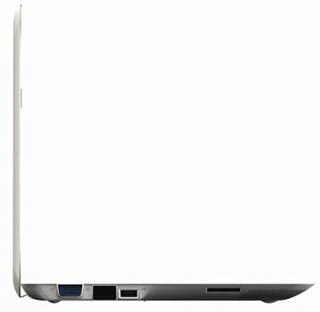Intel Announces New SU2700 CPU, GS40 Chipset
Intel announces new CULV chip with matching mobile chipset.
The past year has been one of the netbook, partially made possible with the Intel Atom processor. While netbooks were modestly powered, they were top notch when it came to portability and battery life. But for the consumer who wants a little more power (and style), Intel’s consumer ultra low voltage processors are here.
Intel announced several new chips at Computex today, one being the 1.3 GHz SU2700. The CULV chip features a thermal design power 10W, which compares favorably to the standard volt processors TDP of 25W to 35W. Such chips are suitable for laptops 0.8- to 1-inch thick, weighing 2 to 5 pounds that are quieter and typically have longer battery life (Intel estimates over 7 hours with a 57WHr battery) at mainstream system price points.
Intel also introduced the new GS40 chipset to go along with the new ULV chips, which features an HDMI output – which should be put to good use thanks to the added power of the Core 2 Duo that simply isn’t part of the Atom’s arsenal (at least not without a little help from the Nvidia Ion).
"With an ultra-thin laptop powered by Intel ultra-low voltage processors, consumers experience a unique balance of performance and power consumption that is incomparable in the market today – all in a slim, sleek package," said Mooly Eden, vice president and general manager of the Mobile Platforms Group at Intel. "And at mainstream price points, Intel is proud to deliver ultra thin for all."
Stay tuned for more from Computex throughout the week.
Get Tom's Hardware's best news and in-depth reviews, straight to your inbox.
-
Tindytim Since the next Atom will include a bunch of crap on Die, Nvidia should revamp the Ion for this processor, since the lack of processing power was the bottleneck with the Atom.Reply -
chripuck LeJayI like they estimate their 10 watt cpu can work for 7 hours with 57 watt hours.Reply
Lol, good catch!
Obviously they're assuming there's a lot of basic app usage involved where the thermal design drops below 10 watts. -
zetone @LeJay 10W is the maximum consumption @100% CPU load. Under normal conditions no one uses a netbook several hours with the CPU @100%. You do not buy a netbook to do h.264 encoding. It will take forever.Reply
Therefore, under normal conditions, (with an average CPU load of 10%) this guy should not take more the 1-2W. -
Alien_959 Hmmm. 2 watts for the CPU, but what about LCD, hard drive,wireless, chipset, and other components surly equals to around 10-12 watts. 7 hours maybe at idle, with screen brightness at low doing nothing. Maybe :)Reply
-
This is for people into 'Hyper-watting'. Like hyper-miling, they strive to see how long they can go on battery for. Both are merely for bragging rights. I mean, what sane person would turn their car OFF when they're going down a hill?Reply
-
Tindytim andesssdhI mean, what sane person would turn their car OFF when they're going down a hill?I take my car out of gear when going down hills. I don't really see how turning your car off would help, considering you'd have to expend energy to start it again.Reply -
anamaniac I like low-power netbooks, but the sacrifice in performance is just too much for me.Reply
Though it would be nice to say, have a satellite net connection via USB and a 500WHr backup UPS. Power goes out while you're in the middle on nowhere, and you still have net access for days. :) -
Hanin33 TindytimSince the next Atom will include a bunch of crap on Die, Nvidia should revamp the Ion for this processor, since the lack of processing power was the bottleneck with the Atom.Reply
not possible under current contracts and there's a huge dispute over this in courts as we speak. nvidia only has license to create chipsets for x86 where the memory controller is not integrated.

